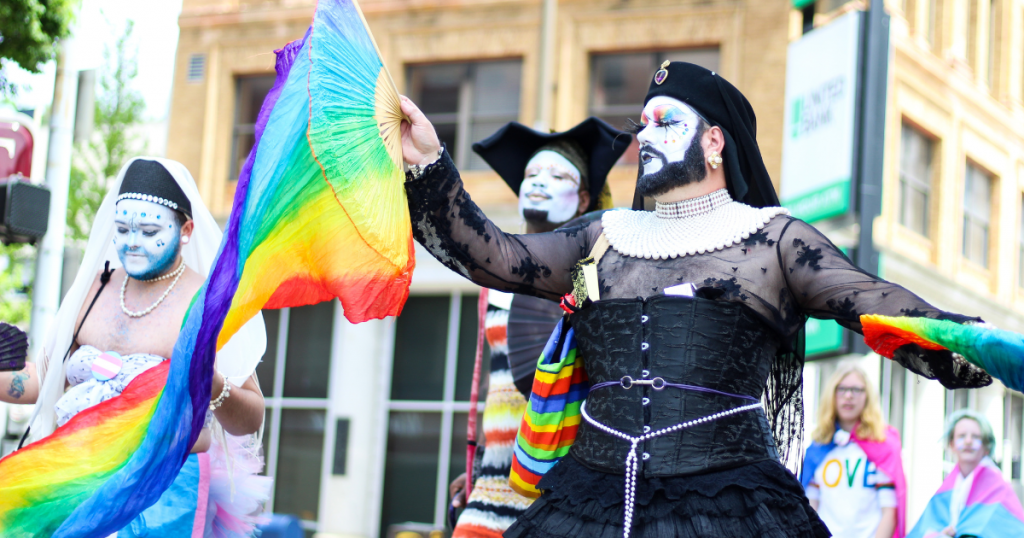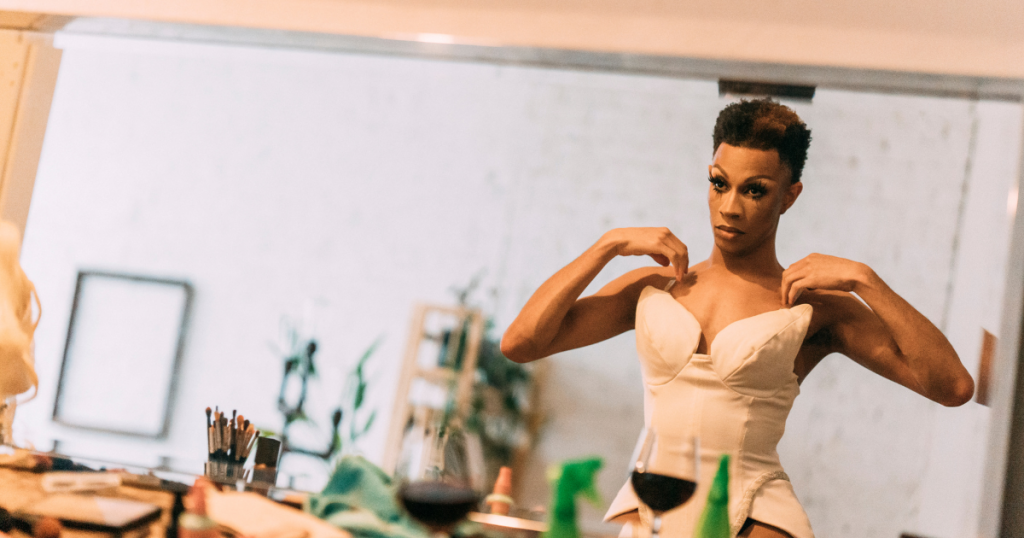
For centuries, traditional gender roles and expectations have dominated the fashion industry, with men expected to wear suits and women expected to wear dresses. Anyone who deviated from these norms was often met with criticism and discrimination. However, in recent years, the transgender community has been fighting back against these rigid gender norms and reclaiming their right to express themselves through fashion.
The transgender community has long faced discrimination and marginalization, and this has been especially evident in the fashion industry. Many transgender individuals struggle to find clothing that fits their unique body types and identities, thus excluding them from mainstream fashion campaigns and shows. As a result, the transgender community has had to rely on DIY solutions and underground fashion scenes to find clothing that represents their true selves.
But in recent years, there has been a shift towards greater inclusivity and acceptance in the fashion industry. More and more brands and designers are starting to recognize the importance of representing and catering to the transgender community, and are taking steps to create clothing lines that are more inclusive and gender-neutral. Transgender models and influencers are also becoming more visible in the industry, challenging traditional beauty standards and providing much-needed representation.
The rise of transgender fashion is a powerful statement against discrimination and a celebration of self-expression and individuality. In this blog, we will explore the history of transgender fashion, the challenges faced by the community in the fashion industry, the rise of transgender-inclusive brands and models, and the future.
The history of transgender fashion is a long and complex one, reflecting the struggles and triumphs of the transgender community.
In the past, transgender individuals were often forced to conform to societal expectations of gender and dress, and those who refused to do so faced discrimination and persecution. Many transgender people turned to underground fashion scenes and DIY solutions to create clothing that fit their unique body types and identities, often at great personal risk.
However, in the latter half of the 20th century, there was a rise in visibility and acceptance of the community, and this was reflected in the fashion industry. In the 1980s and 90s, transgender models and designers like Tracey “Africa” Norman, Caroline “Tula” Cossey, and Alexander McQueen began to make a name for themselves in the fashion world, paving the way for greater representation and inclusivity.
In the 21st century, the transgender community has continued to push for greater visibility and representation in the fashion industry. Brands and designers like Casil McArthur, Gogo Graham, and Aries have made a name for themselves by creating clothing lines that cater to the transgender community, while transgender models like Lea T, Andreja Pejic, and Hari Nef have become household names.
The rise of transgender fashion is a powerful statement against discrimination and a celebration of self-expression and individuality. It represents the ongoing struggle for acceptance and representation of the community, and serves as a reminder that fashion is for everyone, regardless of their gender identity.

Despite the progress that has been made in recent years, the transgender community still faces numerous challenges in the fashion industry.
One of the main challenges is a lack of representation and inclusivity. Many transgender individuals struggle to find clothing that fits their unique body types and identities, and are often excluded from mainstream campaigns and shows. This lack of representation reinforces negative stereotypes and reinforces the idea that the transgender community is not “normal” or “desirable.”
Another challenge is discrimination and prejudice. Many transgender individuals face discrimination and prejudice from within the fashion industry, including from employers, clients, and colleagues. This can make it difficult for transgender individuals to succeed and thrive in the industry, and can also lead to self-censorship and a lack of authenticity in their work.
There are also financial challenges the transgender community is facing in the fashion industry. Many individuals struggle to make ends meet, and may not have the resources to invest in their fashion careers. This can make it difficult for them to get the training and education they need to succeed in the industry, and can also limit their opportunities for advancement.
Despite these challenges, the community has continued to push for change and acceptance in the fashion industry. Through their talent, hard work, and determination, they are breaking down barriers and paving the way for greater representation and inclusivity.
In recent years, there has been a rise in transgender-inclusive brands and models in the fashion industry.
One of the key driving forces behind this trend has been the increasing visibility and acceptance of the transgender community. As more and more people become aware of the struggles and triumphs of the community, there has been a growing demand for brands and designers that cater to their unique needs and desires.
In response to this demand, a number of brands and designers have started to create clothing lines that are more inclusive and gender-neutral. Brands like Casil McArthur, Gogo Graham, and Aries are making name for themselves by offering clothing that is designed to fit and flatter the bodies of transgender individuals, and by using transgender models in their campaigns.
In addition to transgender-inclusive brands, there has also been a rise in transgender models and influencers in the industry. Models like Lea T, Andreja Pejic, and Hari Nef have become household names, challenging traditional beauty standards and providing much-needed representation for the transgender community.
The rise of transgender-inclusive brands and models is a positive step towards greater inclusivity and acceptance in the fashion industry. It represents a shift towards a more open and welcoming industry that recognizes and celebrates the diversity of the transgender community.
The future of transgender fashion looks bright, with more and more brands and designers embracing inclusivity and diversity.
One of the key trends in transgender fashion is the continued rise of transgender-inclusive brands and designers. As more and more people become aware of the struggles and triumphs of the transgender community, there will be a growing demand for brands that cater to their unique needs and desires. This will likely lead to an increase in the number of brands and designers creating clothing lines that are more inclusive and gender-neutral, and using transgender models in their campaigns.
Another trend to watch out for is the continued expansion of the transgender fashion market. As the transgender community continues to grow and gain visibility, there will be a greater demand for clothing and accessories that cater to their unique body types and identities. This will likely lead to an increase in the number of retailers and online shops offering a wider range of options for transgender individuals.
In addition to the trends mentioned above, there are a few other developments to look out for in the future of transgender fashion. One trend is the increasing use of technology to create more inclusive and personalized fashion experiences. With the rise of virtual reality and 3D printing, it is becoming easier for brands and designers to create custom clothing that fits the unique body types and identities of transgender individuals. This technology also has the potential to revolutionize the way fashion is designed, produced, and sold, making it more accessible and affordable for everyone.
Another trend to watch out for is the continued focus on sustainability and ethical fashion. As consumers become more aware of the environmental and social impacts of fashion, there will be a growing demand for brands and designers that prioritize sustainability and ethical production practices. This could lead to a shift towards more sustainable and ethical materials and production methods, as well as a focus on diversity and inclusivity in the fashion industry.
Overall, the future of transgender fashion is bright and full of possibilities. With more and more brands and designers embracing inclusivity and diversity, and with the use of technology and a focus on sustainability, the industry is becoming more open and welcoming for everyone. The transgender community will continue to thrive and make their mark on the world of fashion, and the industry as a whole will benefit from the diversity and creativity they bring.
The rise of transgender fashion is a powerful statement against discrimination and a celebration of self-expression and individuality. It represents the ongoing struggle for acceptance and representation of the transgender community, and serves as a reminder that fashion is for everyone, regardless of their gender identity.
Despite the challenges faced by the transgender community in the fashion industry, such as a lack of representation and inclusivity, discrimination and prejudice, and financial barriers, they have continued to push for change and acceptance. The rise of transgender-inclusive brands and models, as well as the expansion of the transgender fashion market, is a positive step towards a more open and welcoming industry.
The future of transgender fashion looks bright, with more and more brands and designers embracing inclusivity and diversity. As the industry becomes more open and welcoming, it is likely that the transgender community will continue to thrive and make their mark on the world of fashion. The rise of transgender fashion is a testament to the resilience and determination of the transgender community, and a reminder that everyone has the right to express themselves through fashion.
Leave a comment